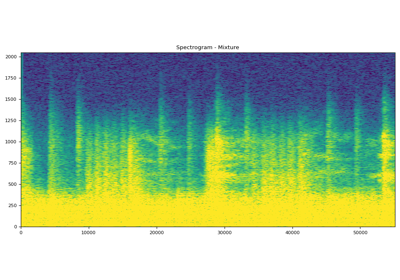SourceSeparationBundle¶
- class torchaudio.pipelines.SourceSeparationBundle[source]¶
用於捆綁執行源分離元件的資料類。
- 示例
>>> import torchaudio >>> from torchaudio.pipelines import CONVTASNET_BASE_LIBRI2MIX >>> import torch >>> >>> # Build the separation model. >>> model = CONVTASNET_BASE_LIBRI2MIX.get_model() >>> 100%|███████████████████████████████|19.1M/19.1M [00:04<00:00, 4.93MB/s] >>> >>> # Instantiate the test set of Libri2Mix dataset. >>> dataset = torchaudio.datasets.LibriMix("/home/datasets/", subset="test") >>> >>> # Apply source separation on mixture audio. >>> for i, data in enumerate(dataset): >>> sample_rate, mixture, clean_sources = data >>> # Make sure the shape of input suits the model requirement. >>> mixture = mixture.reshape(1, 1, -1) >>> estimated_sources = model(mixture) >>> score = si_snr_pit(estimated_sources, clean_sources) # for demonstration >>> print(f"Si-SNR score is : {score}.) >>> break >>> Si-SNR score is : 16.24. >>>- 使用
SourceSeparationBundle的教程

